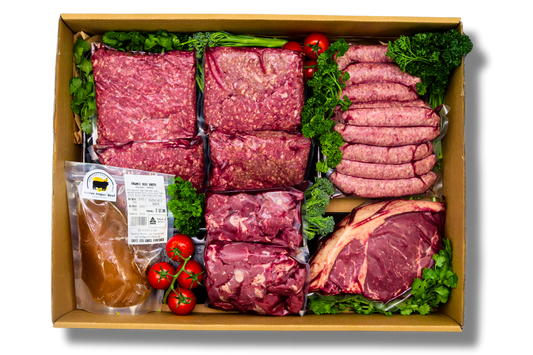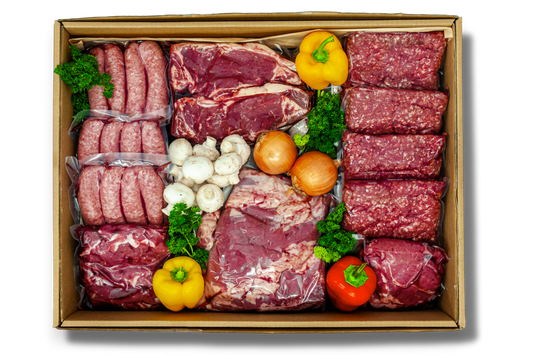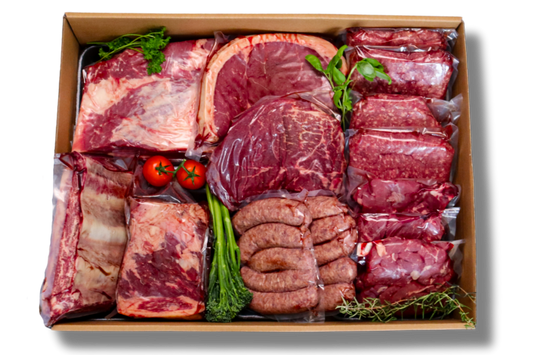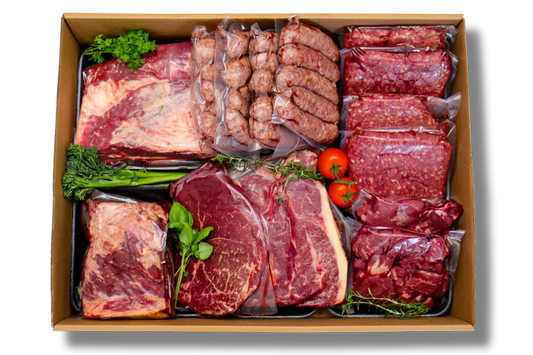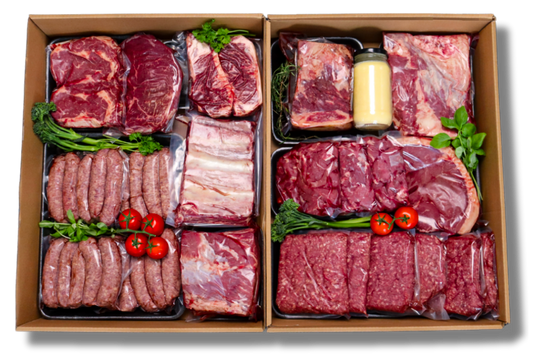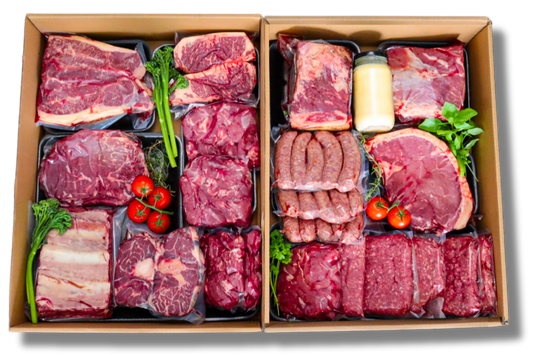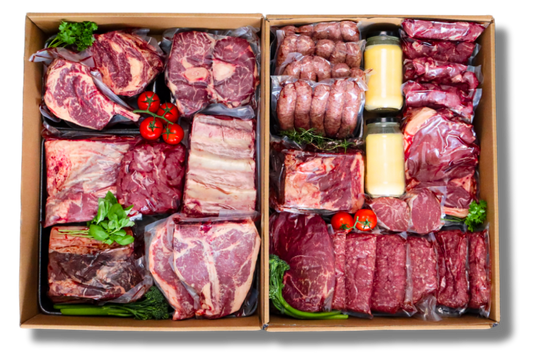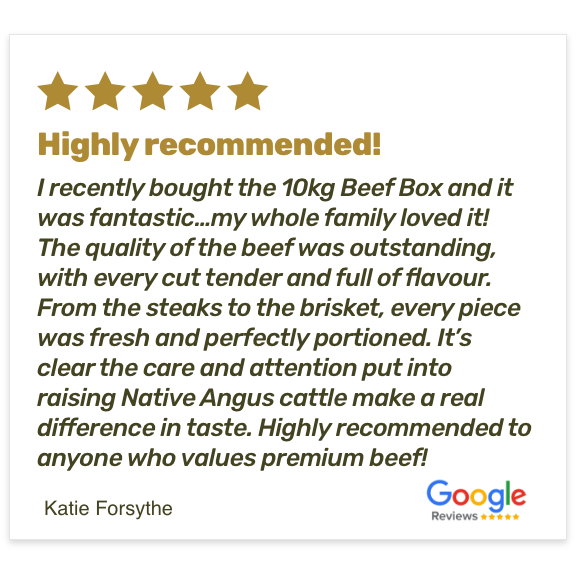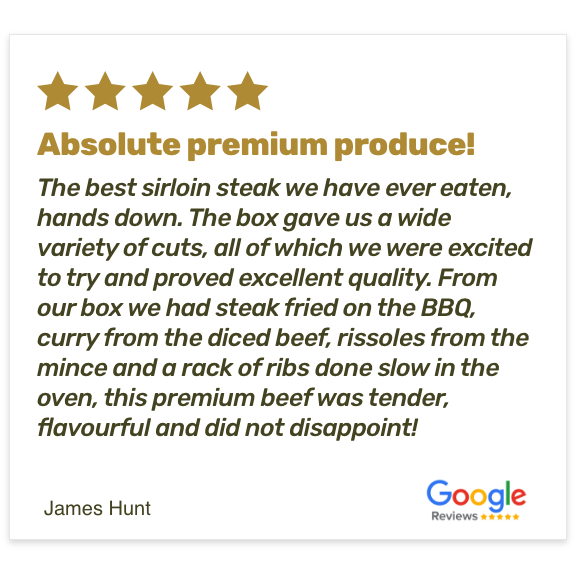Part 2: Understanding Fats | What Your Body Really Needs
Fats have long been misunderstood. For decades, we’ve been told to avoid them, label them as “bad”, and replace them with highly processed alternatives. But fats are not the enemy. They’re an essential part of good nutrition and play a vital role in keeping your body functioning at its best.
In Part 1 of our series on Understanding Fats, we explored the importance of balance between omega-3 and omega-6 fatty acids, and why pasture-raised beef naturally supports that balance. Now, let’s take a closer look at the different types of fats, how they work in your body, and what makes some better than others.
What Are Fatty Acids?
At their simplest, fats are made up of fatty acids: long chains of carbon atoms with hydrogen atoms attached to their two free bonds. The way these atoms bond determines how the fat behaves and how your body uses it.
A fatty acid like stearic acid (C18:0), for example, has 18 carbon atoms (plus 36 hydrogen and 2 oxygen atoms), and no double bonds (hence the "0"), which makes it saturated. That structure means it’s solid at room temperature and stable when heated. Other fats, with one or more double bonds, are less stable and more prone to oxidation, which can create harmful byproducts in the body.
Saturated Fat: The Steady Foundation
Saturated fats are often misunderstood, yet they’re essential for good health. In nature, they’re found in animal fats such as tallow, butter, and lard, and are solid at room temperature. Our own bodies even produce them, which should tell us they’re not inherently harmful.
Why Saturated Fats Matter
- Hormone production: Saturated fats help the body create cholesterol, a critical building block for hormones like oestrogen, progesterone, testosterone, cortisol, and Vitamin D. These hormones regulate everything from mood to metabolism.
- Cell structure: Your body is made up of trillions of cells, each surrounded by a membrane that needs both strength and flexibility. Saturated fats give those membranes stability, particularly under stress or heat, while unsaturated fats provide movement and fluidity.
- Skin and sun resilience: Well-nourished cell membranes support skin health from within. When your diet includes enough natural saturated fats, your skin can better tolerate sunlight and environmental stress. As with all things in nature, achieving balance is key for building healthy and functional cell membranes.
- Immune health: Immune cells rely on stable membranes to communicate and respond to threats. Saturated fats help organise signalling proteins that govern immune response and inflammation control.
Historically, humans ate a diet with a saturated and unsaturated fat ratio of about 1:2. Today, the modern Western diet has shifted dramatically to about 1:4, mostly due to the widespread use of seed oils. That imbalance can affect everything from hormone balance to skin integrity and immune resilience.
Monounsaturated Fat: The Flexible Helper
Monounsaturated fats have one double bond in their carbon chain (rather than two), which makes them more fluid than saturated fats but still relatively stable. You’ll find them in olives, avocado, nuts, and in smaller amounts, in grass-fed beef.
These fats are particularly helpful in:
- Supporting heart health by lowering LDL (bad for the heart) cholesterol and maintaining HDL (good for the heart) cholesterol.
- Helping your body absorb fat-soluble vitamins such as A, D, E, and K.
- Contributing to supple, healthy cell membranes.
Polyunsaturated Fat: The Essential Players
Polyunsaturated fats are made up of carbon chains with several double bonds; spots where hydrogen atoms are missing. These double bonds make the molecules flexible, which is why polyunsaturated fats are liquid at room temperature and sensitive to heat and light.
This group includes the essential fatty acids your body can’t make on its own, meaning they must come from food. Among them are omega-3s (EPA, DHA, and ALA) and omega-6s (linoleic and arachidonic acids).
Polyunsaturated fats are crucial because they:
- Help lower LDL (bad) cholesterol and reduce blood vessel inflammation, which supports heart health and lowers the risk of stroke.
- Support brain and cognitive function, with DHA playing an especially important role in the brain and retina.
- Form the building blocks of healthy cell membranes, ensuring flexibility and proper function.
- Aid absorption of fat-soluble vitamins A, D, E, and K, which are essential for vision, bone strength, and blood clotting.
- Balance inflammation, strengthen immunity, and protect against chronic disease.
- Provide a steady, efficient energy source for cells that doesn’t rely on sugar metabolism.
Maintaining a balanced intake of omega-3 and omega-6 fatty acids helps your body regulate inflammation, energy production, and overall wellbeing.
Trans Fats: The Modern Problem
Not all fats are created equal. Trans fats are mostly man-made, produced through hydrogenation; a process used to make vegetable oils more solid and shelf-stable. These are found in margarine, shortening, and many processed foods such as cookies, crackers, pastries, and deep-fried foods.
Trans fats interfere with normal cell function, contribute to inflammation, and are strongly linked with heart disease and metabolic disorders. Fortunately, natural animal fats like tallow do not contain these industrial trans fats.
The Seed Oil Issue
Seed oils, such as canola, sunflower, soybean, and corn oil, are relatively new additions to the human diet. Extracted through industrial methods using heat and chemical solvents, these oils are often refined, bleached, and deodorised before reaching supermarket shelves.
Originally developed for machinery lubrication, seed oils later found their way into animal feed (with poor results), and eventually into our food. High in omega-6 fatty acids, they’ve contributed to a dramatic rise in the omega imbalance discussed earlier.
While moderation is key, it’s worth asking whether these highly processed oils deserve such a dominant place in our diets, particularly when natural, stable fats from pasture-raised animals remain available and nutritionally superior.
While I don't want to sound alarmist, I hope this inspires you to consider whether seed oils deserve a place in your diet.
Why We Choose Tallow
At Native Angus Beef, we recommend cooking with tallow: a traditional fat that has nourished humans for generations.
Tallow is rich in stearic and palmitic acids (saturated fats), balanced with monounsaturated oleic acid and beneficial compounds like CLA. It’s stable at high temperatures, making it ideal for roasting, frying, or baking.
Compared to other natural fats:
- Ghee contains butyric acid, excellent for gut health, but has less CLA and may contain traces of dairy proteins.
-
Lard is higher in omega-6 due to pig diets, even when free-range.
Tallow offers the most balanced fatty acid profile for both nutrition and cooking stability.
Returning to Nature’s Design
Before industrialisation, our ancestors sourced their fats from pasture-raised animals, coconuts, and fish. These provided nourishment, energy, and stability without the need for chemical processing.
By returning to traditional, natural fats, we can support our bodies the way nature intended, with balanced nutrition that promotes resilience, vitality, and long-term health.
At Native Angus Beef, every decision we make is grounded in this philosophy.
Good fats aren’t something to fear. They’re something to understand, respect, and enjoy.
By Susan Hendry, Co-Founder, Native Angus Beef
